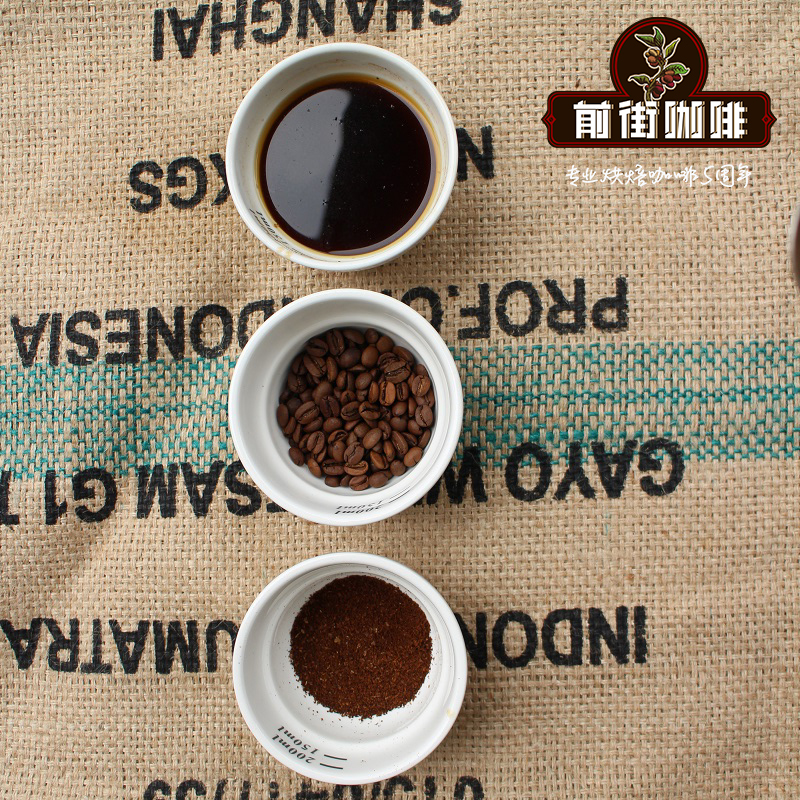Colombia-what kind of coffee beans are treated at Bishop's Mountain Coffee Manor?

Professional coffee knowledge exchange more coffee bean information please follow the coffee workshop (Wechat official account cafe_style)
Colombian Ulla Coffee Kaddura and Bourborn coffee from the Colombian Uila region score more than 95 points in the Coe Cup test and the National Cup test almost every year. In particular, the specially selected beans are neat and homogeneous, with the same particle size. Because of the high altitude (above 1500m), fertile volcanic mud soil and local Cachingo trees, the soil and water conservation of the area has always been maintained in an ideal proportion of ecological sustainability, especially in the "fruit flavor" with a "beautiful and wonderful" performance.
The entrance and finish of Uila coffee are excellent, the first smell is not very clear, but it is still clear, while the fruit aroma is mixed with Hua Li, the final rhyme is particularly beautiful, the honey is sweet for a long time, the finish rhyme is endless, and the tail is beautiful. People with "Qiaojin" as the main skill will be specially recommended to feel and experience Ulla coffee. There is actually a lot of coffee with rich layers. For example, Mozart coffee with a "clear and clear" level is suitable for hand-washing teaching demonstration, while Luanda model raw water washing beans with "balanced performance of various flavors" as the first choice for hand-washing practice.
From dry fragrance, wet fragrance, cleanliness and brightness to fly high as the expected beginning, but in the taste, balance, complexity is not particularly outstanding, but only faint and stable low-altitude skimming. However, when it comes to the display of acidity and sweetness, it suddenly overlaps and leaps, too busy to see. The exquisite is not finished, but also from the lung lobe to the throat intoxicated Huigan. Even cup testers have to borrow the Chinese word "Yu Yin around Liang", which is not "cup test and comment grammar" at all to describe the beauty of this coffee.
Tibica, Bishop's Hill Manor, Ulla, Colombia
The Alto del Obispo diocese (literally, Bishop Hill), located in the Huila Mountains of Colombia, has been growing coffee for more than a century. Alto del Obispo is home to about 300 households, most of which make a living by growing coffee in small farms (90 per cent of the local income is the coffee economy). Local farmers also grow silk orchids, plantains, dragon fruits and mangoes, and several of them are self-sufficient in poultry such as chickens and pigs. Very few live by raising cattle.
Local small farmers grow their own coffee by their families, and the average size of the farm is about 3 hectares. Only during the harvest season (October to December) will three or four people be hired to help collect coffee cherries. The coffee here mainly grows under the Guamo tree, which is a native fruit tree. Coffee also grows under the local Cachingo tree, which is high in water content and helps to retain moisture in the soil. Farmers also handle raw beans on their own. They peel the beans with traditional water washing, soak them in a fermentation tank, and then place them in an elvas shop to dry. Elvas refers to the roof used by local farmers for exposure. Some farmers also use flat terraces or suspended African hammocks to make coffee.
Alto del Obispo farmers have not joined the formal organizational alliance, and we mainly buy cups of test-certified coffee from Huila's warehouse in the small town of Pitalito. Having said that, we still have channels to contact the independent farmers of each batch of coffee.
Farmers near Alto del Obispo have participated in the good farming Program (Buenas pr á cticas Agricolas, or BPA), which aims to improve the quality of farming, take into account the health and livelihood of farmers, and promote the concept of environmental sustainability.
In 2009, the region had a problem with Roya due to an unusually severe drought (Roya means that mushrooms dry the leaves, which in turn affects the growth of coffee cherries). Also because of climate change, the average annual temperature has risen, forcing farmers to plant more trees (such as Guamo and Cachingo) to protect coffee trees.
Origin: Colombia
Treatment: washing
Baking degree: shallow baking
Flavor: floral fragrance, lemon, orange, apricot stone, syrup
Important Notice :
前街咖啡 FrontStreet Coffee has moved to new addredd:
FrontStreet Coffee Address: 315,Donghua East Road,GuangZhou
Tel:020 38364473
- Prev

Introduction to the flavor and taste of coffee beans in Costa Rica-Lyon Chateau
Coffee workshop (Wechat official account cafe_style) Costa Rican Coffee Coffee is located in the south of the country's capital San Jos, it is one of the most valued coffee growers in the country. Tarasu Latin America (La Minita Tarrazu) coffee is when
- Next

KIBIRINGWI Manor in Kenya-- introduction to the flavor and taste of coffee variety treatment
Professional coffee knowledge exchange more coffee bean information Please follow Coffee Workshop (Wechat official account cafe_style) KIBIRINGWI Manor is only 3 kilometers away from the famous Nyeri Coffee Town, located in the heart of Nyeri County (Nyeri) County. The large manor, managed and managed by the Catholic diocese Nyeri, is the earliest and largest in Kenya.
Related
- Does Rose Summer choose Blue, Green or Red? Detailed explanation of Rose Summer Coffee plots and Classification in Panamanian Jade Manor
- What is the difference between the origin, producing area, processing plant, cooperative and manor of coffee beans?
- How fine does the espresso powder fit? how to grind the espresso?
- Sca coffee roasting degree color card coffee roasting degree 8 roasting color values what do you mean?
- The practice of lattes: how to make lattes at home
- Introduction to Indonesian Fine Coffee beans-- Java Coffee producing area of Indonesian Arabica Coffee
- How much will the flavor of light and medium roasted rose summer be expressed? What baking level is rose summer suitable for?
- Introduction to the characteristics of washing, sun-drying or wet-planing coffee commonly used in Mantenin, Indonesia
- Price characteristics of Arabica Coffee Bean Starbucks introduction to Manning Coffee Bean Taste producing area Variety Manor
- What is the authentic Yega flavor? What are the flavor characteristics of the really excellent Yejasuffi coffee beans?

